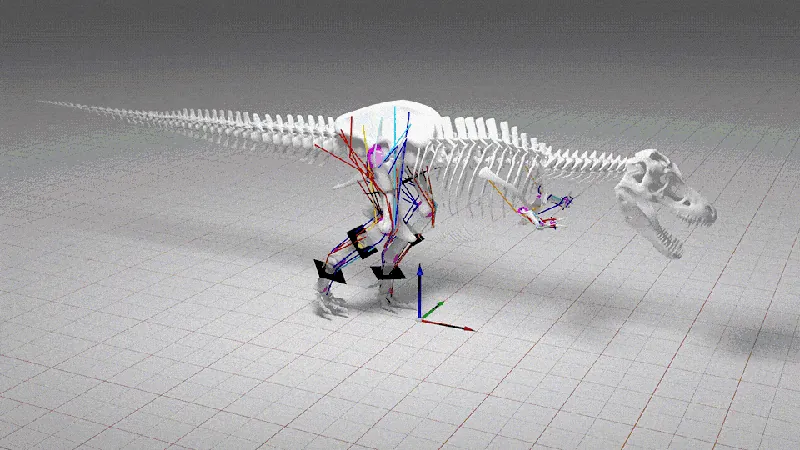
Unmasking the Speedster: Which Dinosaur Held the Record for Rapid Movement?
2025-04-28
Author: William
The Shift in Understanding Dinosaurs
Before the 1960s, the notion of dinosaurs primarily depicted them as sluggish, cold-blooded creatures. However, everything changed during the summer of 1964 when a groundbreaking discovery reshaped our viewpoint. Paleontologist John Ostrom unearthed Deinonychus, a dinosaur characterized by its large, sharp claws, lightweight body, and powerful legs, suggesting it was anything but slow.
This revelation sparked the "dinosaur renaissance," a revolutionary scientific movement that unveiled the agility and speed some dinosaurs possessed.
The Quest for the Fastest Dinosaur
So, which dinosaur wins the title for speed? According to paleontologist Susannah Maidment from the Natural History Museum in London, the Ornithomimosauria—a group of slender, ostrich-like dinosaurs from the Late Cretaceous—was likely the fastest. Their anatomical features, designed for swift movement, make them prime candidates for this illustrious title.
"With long limbs and strategic muscle placements, they function similarly to a pendulum, allowing for quick movement," Maidment explained.
The Science of Speed Assessment
To uncover the speediest dinosaur, scientists turn to biomechanics, a field popularized by zoologist Robert McNeill Alexander in the 1970s. He discovered a correlation between leg length and stride that offers valuable insights into estimating an animal’s speed.
Although researchers have often relied on dinosaur trackways to measure speed, this method has its limitations. Paleontologist Eugenia Gold notes, "Good tracks are found in softer soils where animals might not be moving at their maximum pace." Thus, the available data on maximum speeds often lacks accuracy.
Revolutionizing Predictions with Technology
To break through these limitations, William Sellers, a professor at the University of Manchester, adopted evolutionary robotics alongside biomechanical modeling. Using 3D simulations of dinosaur movement, Sellers could predict how these magnificent beings moved, leading to refined speed estimates.
Testing his models based on modern animals like humans and ostriches gave him confidence in extrapolating results to nonavian dinosaurs.
The Results Are In
From his examination of five notable dinosaurs—Allosaurus, Compsognathus, Dilophosaurus, Tyrannosaurus rex, and Velociraptor—Sellers crowned Compsognathus as the fastest, with a staggering speed of approximately 39.8 mph (64.1 km/h). Velociraptor followed suit at around 24.1 mph (38.9 km/h). Surprisingly, the notorious T. rex lagged behind at an estimated speed of 17.9 mph (28.8 km/h), facing limitations due to its massive frame.
A Call for Further Exploration
While Compsognathus holds the record among the modeled dinosaurs, Sellers suggests that this is just a glimpse. He theorizes that other theropods might still beat this mark, but a full modeling of all species would be required for a definitive answer. With modeling being a time-intensive process, determining the ultimate speed demon among dinosaurs remains a tantalizing challenge.
The Living Legacy of Dinosaurs
In a captivating twist, Gold reminds us that while we debate the fastest dinosaur, the closest living relatives to these ancient creatures—birds—are a testament to their speed and agility today.









 Brasil (PT)
Brasil (PT)
 Canada (EN)
Canada (EN)
 Chile (ES)
Chile (ES)
 Česko (CS)
Česko (CS)
 대한민국 (KO)
대한민국 (KO)
 España (ES)
España (ES)
 France (FR)
France (FR)
 Hong Kong (EN)
Hong Kong (EN)
 Italia (IT)
Italia (IT)
 日本 (JA)
日本 (JA)
 Magyarország (HU)
Magyarország (HU)
 Norge (NO)
Norge (NO)
 Polska (PL)
Polska (PL)
 Schweiz (DE)
Schweiz (DE)
 Singapore (EN)
Singapore (EN)
 Sverige (SV)
Sverige (SV)
 Suomi (FI)
Suomi (FI)
 Türkiye (TR)
Türkiye (TR)
 الإمارات العربية المتحدة (AR)
الإمارات العربية المتحدة (AR)